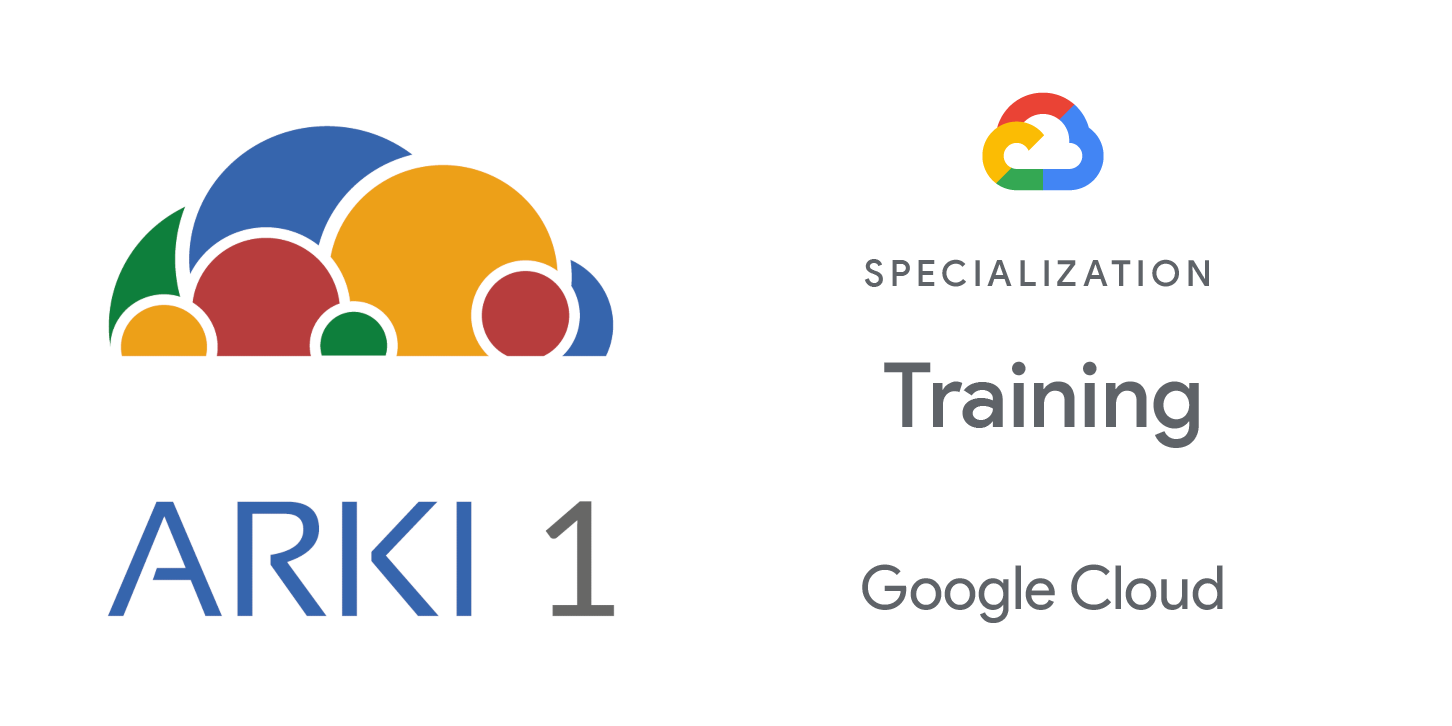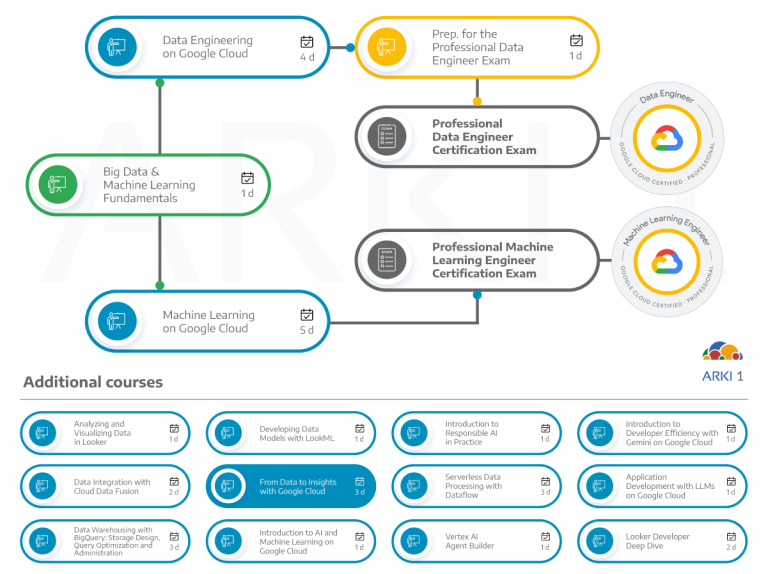Explore ways to derive insights from data at scale using BigQuery, Google Cloud’s serverless, highly scalable, and cost-effective cloud data warehouse. This course uses lectures, demos, and hands-on labs to teach you the fundamentals of BigQuery, including how to create a data transformation pipeline, build a BI dashboard, ingest new datasets, and design schemas at scale.
Objetives
In this course, participants will learn the following skills:
- Derive insights from data using the analysis and visualization tools on Google Cloud.
- Load, clean, and transform data at scale with Dataprep.
- Explore and visualize data using Looker Studio.
- Troubleshoot, optimize, and write high performance queries.
- Practice with pre-built ML APIs for image and text understanding.
- Train classification and forecasting ML models using SQL with BigQuery ML.
Audience
This class is intended for the following participants:
- Data analysts, business analysts, business intelligence professionals.
- Cloud Data Engineers who will be partnering with data analysts to build scalable data solutions on Google Cloud.
Pre-requisites
To get the most out of this course, participants should have:
- Completed Google Cloud Fundamentals: Core Infrastructure or have equivalent experience.
- Basic proficiency with command-line tools and Linux operating system environments.
- Basic proficiency with ANSI SQL.
Duration
3 days
Investment
Check the next open public class in our enrollment page.
If you are interested in a private training class for your company, contact us.
The course includes presentations, demonstrations, and hands-on labs.
- Compare data infrastructure on-premises versus on Google Cloud.
- Identify data analyst tasks and challenges, and introduce Google Cloud data tools.
- Explore nine fundamental BigQuery features.
- Compare the differences in roles and toolsets between data analysts, data scientists, and data engineers.
- Access the BigQuery web UI and explore a public dataset with basic SQL.
- Compare common data exploration techniques.
- Identify the key components of a basic SQL SELECT statement and common pitfalls.
- Discuss the basics of SQL functions and how they create calculated fields with input parameters.
- Explore BigQuery public datasets.
- Troubleshoot dataset quality issues by analyzing duplicate records with SQL in the BigQuery Web UI.
- Characterize different dataset shapes and potential skew.
- Clean and transform data using SQL.
- Clean and transform data using Dataprep.
- Compare data visualizations and make recommendations for improvement.
- Create dashboards and visualizations with Looker Studio.
- Differentiate between permanent and temporary data tables.
- Identify what types and formats of data BigQuery can ingest.
- Differentiate between native BigQuery table storage and external data source connections.
- Load new data into BigQuery.
- Explain when to use UNIONs and when to use JOINs.
- Identify the key pitfalls when joining and merging datasets.
- Differentiate between join types visually.
- Explain how union wildcards work and when to use them.
- Write SQL JOINs and UNIONs against a dataset in the BigQuery web UI.
- Identify the available statistical approximation functions and userdefined functions.
- Apply large-scale record estimation with approximate aggregation functions.
- Deconstruct an analytical window query and explain when to use RANK() and PARTITION.
- Explain when to use Common Table Expressions (WITH) to break apart complex queries.
- Differentiate between BigQuery and traditional data architecture.
- Work with ARRAYs and STRUCTs as part of nested fields in data schemas.
- Identify BigQuery performance pitfalls.
- Discuss the Query Explanation map and how to interpret MAX and AVG processing times per stage.
- Describe how to analyze and troubleshoot broken queries
- Review data access roles within Google Cloud and BigQuery.
- Highlight key data access pitfalls and how to avoid them.
- Explain how ML on structured data drives value.
- Describe how customer LTV can be predicted with an ML model.
- Choose the right model type for different structured data use cases.
- Create ML models with SQL.
- Discuss how ML is able to drive business value.
- Explain how ML on unstructured data works.
- Differentiate between pre-built ML models, custom models, and new models when considering an AI application strategy.


